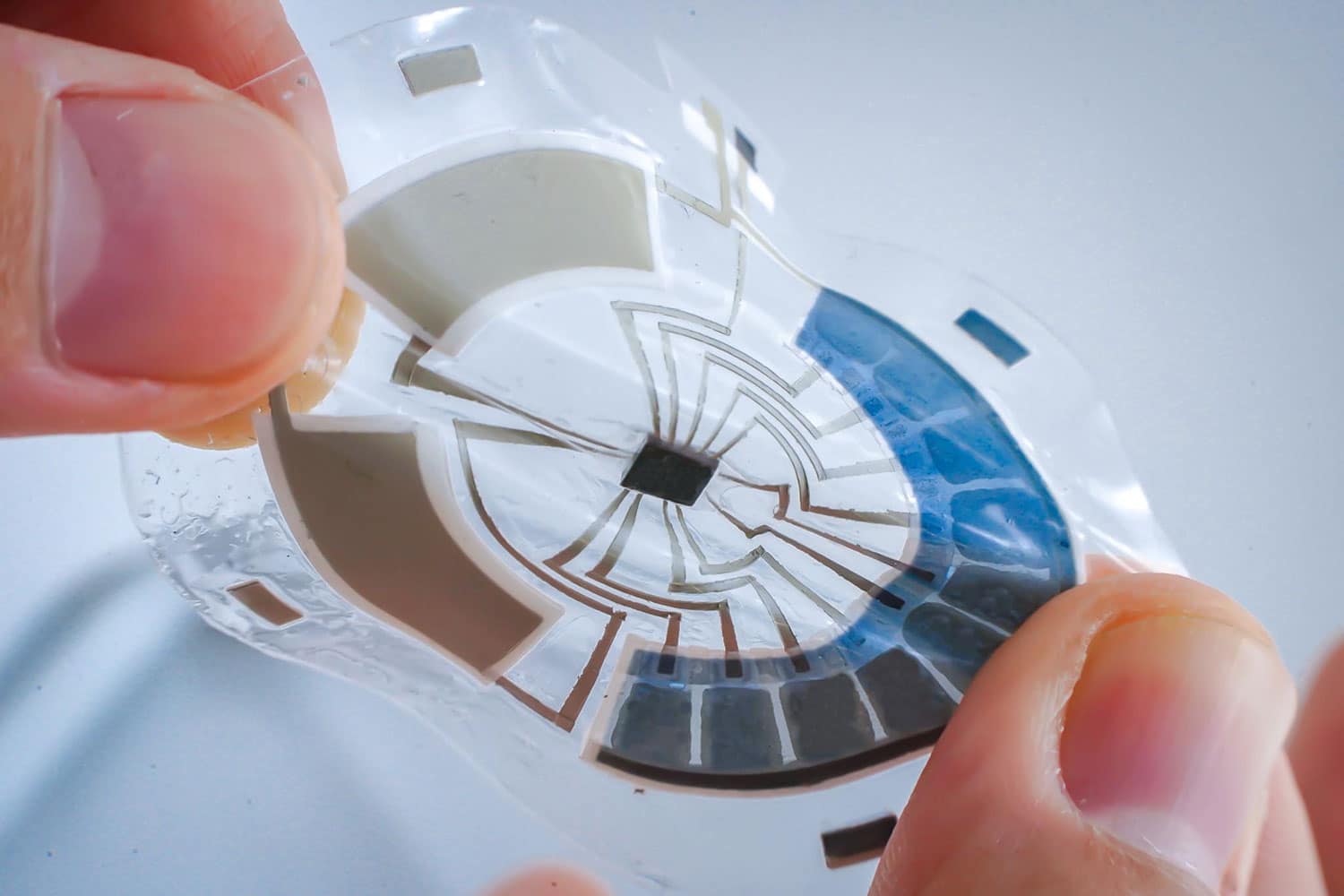
Wearable technology has always been at the forefront of innovations. These tiny electronic devices are of potential use in various health monitoring applications, including non-invasive chemical sensing. However, such platforms are typically limited by the need to connect to extreme devices for power and data visualization.
Now, engineers at the University of California San Diego have developed a thin, flexible and stretchy sweat sensor that can show the level of glucose, lactate, sodium, or pH of your sweat at the press of a finger. The device allows the sensor to operate independently – without any wired or wireless connection to external devices – to directly visualize the result of the measurement.
The fabrication of the device involved nine different types of stretchable inks, which were used to print the batteries, circuits, display panels, and sensors. The device is printed layer-by-layer using low-cost and high-throughput screen printing onto stretchable polymer sheets. And then assembled with hydrogels and microcontroller chips into the complete device. Each ink was optimized to ensure its compatibility with other layers while balancing its electrical, chemical, and mechanical performance.
The wearable device is designed to be worn as a patch adhered to the skin. Researchers stretch-tested each component of the system, making sure that the display, sensors, and batteries can be stretched for up to 20% over 1500 cycles with little to no effects on their performance. The batteries were also packed with enough power to make sure the patch could last over a week of non-stop usage.
To showcase the wide application possibilities of this patch, the researchers demonstrated four different types of sensors that work with this patch: a sodium sensor, a pH sensor, a lactate sensor, and a glucose sensor. Each sensor type measured different metrics in the sweat during exercise. The fluidic channel on the bottom of the patch guides the sweat to flow across the sensor. The concentration of the chemical being measured will instantly show on display as soon as the user presses the switch.
Researchers designed a special type of non-light-emitting display called an electrochromic display to visualize the data from the sensors. The electrochromic display was created with PEDOT:PSS ink formation that makes it both printable and stretchable. The PEDOT:PSS polymer changes from light sky blue to dark navy blue when applying a negative voltage and turns back when applying a positive voltage.
The display panel, composed of 10 individual pixels, is programmed o display the concentration of the chemicals by turning on different numbers of the pixel. After optimizing the operation condition of the display, each pixel can be turned on and off reversibly over 10,000 cycles, more than sufficient for its week-long operation. Once the pixel color has been set, it requires no power to maintain its state. The pixels only take 500 ms to change color, which consumes, on average, 80 microwatts of power.
Currently, the patch is not rechargeable and works with one sensor at a time. The team aims to develop a more advanced version of the integrated sensor, which allows the battery to be rechargeable, and can even harvest energy from the body to extend the lifetime of the wearable patch.
“This is a big step forward in developing wearable electronics that are practical and user-friendly, but this is just a start,” said co-first author Lu Yin.
Journal reference:
- Lu Yin, Mengzhu Cao, Kyeong Nam Kim, Muyang Lin, Jong-Min Moon, Juliane R. Sempionatto, Jialu Yu, Ruixiao Liu, Connor Wicker, Alexander Trifonov, Fangyu Zhang, Hongjie Hu, Jose R. Moreto, Jaekyung Go, Sheng Xu and Joseph Wang. A stretchable epidermal sweat sensing platform with an integrated printed battery and electrochromic display. Nature Electronics, 2022; DOI: 10.1038/s41928-022-00843-6
Engineers develop a standalone sweat sensor with display
Source: Tambay News

0 Comments